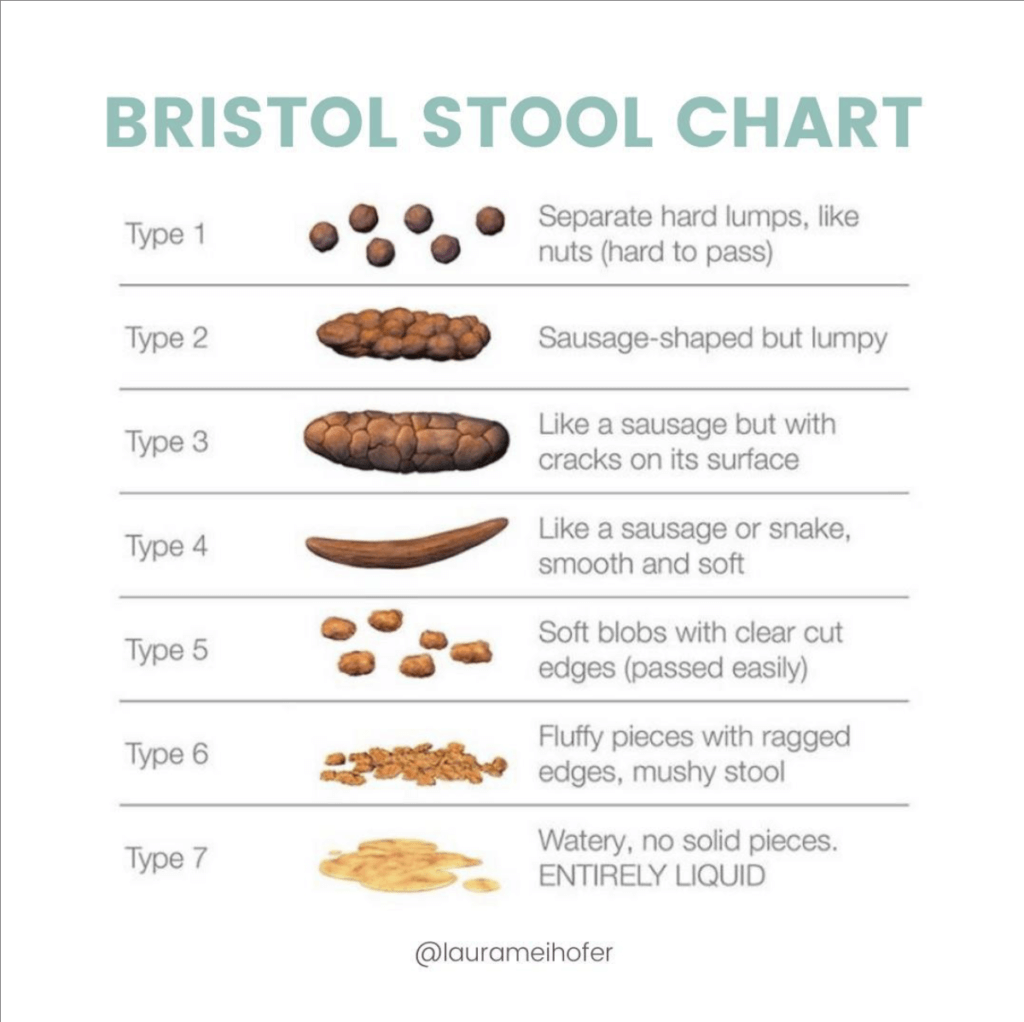
Signs of Bowel Evacuation Disorder
Did you know that trouble passing stool (aka pooping) can be a sign that you’re dealing with pelvic floor dysfunction called Bowel Evacuation Disorder?
In this post, we’re going to cover a few of the top signs of Bowel Evacuation Disorder, then we will move into the next steps and treatment options for you if you feel you are dealing with the signs of Bowel Evacuation Disorder.
WHAT IS BOWEL EVACUATION DISORDER?
Bowel evacuation disorders involve the incoordination of pelvic floor muscles. Your pelvic floor is made up of 26 muscles and, at any age, some of those muscles may be too tight or weak, making it difficult to pass a bowel movement.
(NOTE: Since you are likely dealing with muscles that are too tight or too weak in the pelvic floor, you may also hear Bowel Evacuation Disorder referred to as fecal incontinence, constipation or defecatory dysfunction.)
CONSISTENCY
To determine if you’re dealing with Bowel Evacuation Disorder, one of the first things you’ll probably notice is your stool consistency. Of course, having irregular stools can happen if you consume something that does not sit well with your gastrointestinal system, but continuous and/or frequently irregular bowel movements may be one of the first signs of a Bowel Evacuation Disorder.
An ‘irregular stool’ is one that is above or below a 3-4 on the Bristol Stool Chart. See the image below for reference:
FREQUENCY
A ‘normal’ bowel movement process allows range is 1-3 per day all the way to 3 per week– if you’re pooping more or less than this, this would also be one of the signs of Bowel Evacuation Disorder.
If you’re above or below a 3-4 on the Bristol Stool Chart AND are pooping more or less than you should be, then you might be struggling with a Bowel Evacuation Disorder.
DIAGNOSIS OPTIONS
If you show signs of Bowel Evacuation Disorder, there are many options for you and your Pelvic Floor Physical Therapist to make an official diagnosis. Here are a few:
- Magnetic Resonance Proctography is a specialized magnetic resonance imaging (MRI) process that helps your Pelvic Floor Physical Therapist determine if you present signs of Bowel Evacuation Disorder by showing your pelvic floor motion.
- Portable Anorectal Manometer is a device that your Pelvic Floor Physical Therapist may use to measure pressures in the rectum and anal canal to determine if you present signs of Bowel Evacuation Disorder.
- Anal Electromyography (EMG) is a test that identifies anal sphincter nerve injury in people who present signs of Bowel Evacuation Disorder.
TREATMENT OPTIONS FOR SINGS OF BOWEL EVACUATION DISORDER WITH DR. LAURA MEIHOFER
While pelvic floor dysfunction is common, it is not normal. You can find a better quality of life and relieve your symptoms with the right expert.
Dr. Laura Meihofer’s Bowel Evacuation Disorders treatment focuses on helping patients understand the source of their condition, find balance and retrain their pelvic floor muscles to regain control of their bowel functions. A biofeedback device may be included in the treatment. An electronic biofeedback device allows a pelvic floor therapist to monitor your pelvic floor muscles internally with painless sensors while testing new behaviors.
Patients will learn techniques to relax or strengthen pelvic floor muscles that control bowel functions.
When your Bowel Evacuation Disorders treatment ends, Dr. Laura Meihofer provides you with the tools to continue your pelvic health journey with a customized at-home program. You will continue to see progress with dedication and consistency. Dr. Laura Meihofer recommends her 2-week Bowel Evacuation Program for maximum results, however, the program can be customized to your availability to be in Rochester, Minnesota for treatment.
Want to consult with Dr. Laura Meihofer to determine if you have Bowel Evacuation Disorder? Book a FREE 20-minute consultation HERE.
P.S. If you have any questions about Bowel Evacuation Disorder or pelvic function, head over to Instagram to give me a follow and let’s connect in the DMs!
Other content you may like:
Some of the links on this page may be affiliate links. Laura Meihofer’s LLC is a participant in the Amazon Associates Program and others, as an affiliate advertising program designed to provide a means for sites to earn advertising fees by linking to products Laura organically uses and trusts. If you purchase a product through an affiliate link, your cost will be the same, but Laura will automatically receive a small commission. Your support is greatly appreciated and helps her spread the message about pelvic health!









Sorry, the comment form is closed at this time.